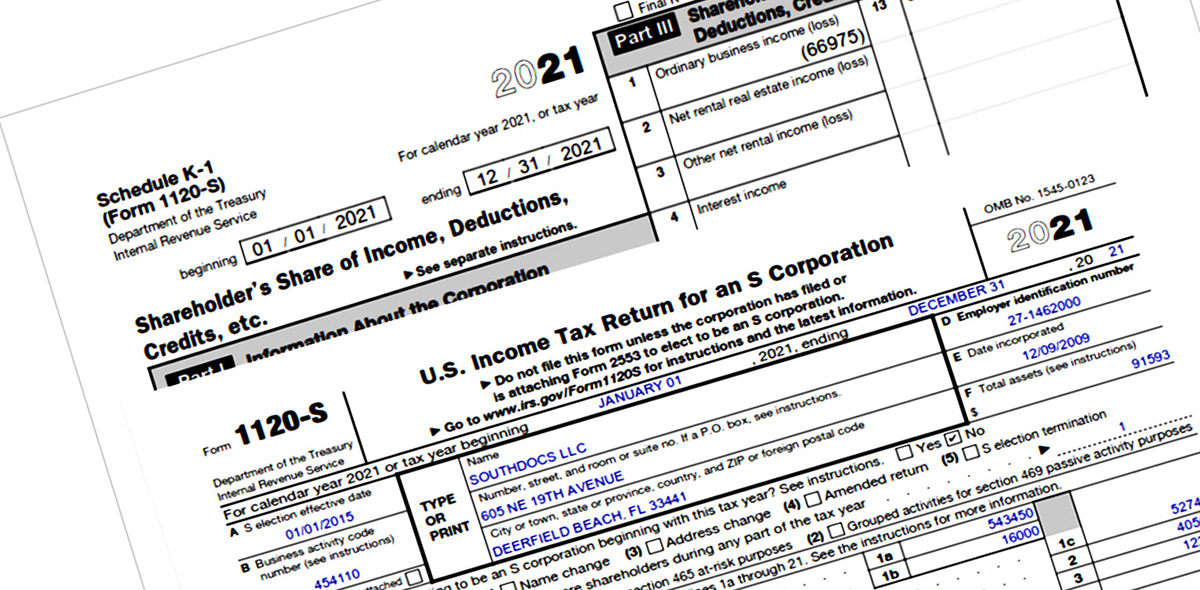Home>Finance>Tax Planning For Clients Who Will Have A Big Tax Due


Finance
Tax Planning For Clients Who Will Have A Big Tax Due
Published: January 20, 2024
Looking for tax planning advice? Discover expert strategies to minimize your tax liability and prepare for a big tax due with our finance-focused solutions.
(Many of the links in this article redirect to a specific reviewed product. Your purchase of these products through affiliate links helps to generate commission for LiveWell, at no extra cost. Learn more)
Table of Contents
- Introduction
- Understanding the tax implications
- Analyzing the client’s financial situation
- Strategies for reducing tax liability
- Maximizing deductions and credits
- Utilizing tax-efficient investment options
- Timing income and expenses
- Implementing tax planning strategies
- Working with a tax professional
- Conclusion
Introduction
Tax planning is an essential aspect of financial management that can help individuals and businesses optimize their tax obligations. For clients who anticipate a significant tax due, effective tax planning becomes even more critical. By taking proactive steps to reduce tax liability, clients can prevent unexpected tax bills and potentially save substantial sums of money.
Understanding the complex tax code and the various strategies available is vital for both individuals and businesses. By working with a knowledgeable tax professional, clients can gain insights into tax planning opportunities specific to their unique financial situations.
In this article, we will explore tax planning strategies for clients who will have a big tax due. We will discuss the importance of understanding the tax implications, analyzing the client’s financial situation, maximizing deductions and credits, utilizing tax-efficient investment options, timing income and expenses, implementing tax planning strategies, and working with a tax professional.
Whether you are a financial advisor, a tax professional, or an individual looking to optimize your tax situation, this article will provide valuable insights and strategies to help you navigate the complexities of tax planning.
Understanding the tax implications
Before implementing any tax planning strategies, it is crucial to have a thorough understanding of the tax implications specific to the client’s financial situation. This involves examining the tax laws and regulations applicable to their jurisdiction, as well as gaining insights into how different types of income are taxed.
For example, clients who have a high taxable income may be subject to higher tax brackets, resulting in a greater percentage of their income being taxed. Understanding the progression of tax rates can help identify opportunities to reduce taxable income or take advantage of deductions and credits.
Additionally, it is essential to consider the types of income that are subject to taxation. This includes not only traditional employment income but also investment income, rental income, business income, and capital gains. Each category of income may have different tax rates or deductions available, impacting the overall tax liability.
Moreover, clients should be aware of any changes in tax legislation and how those changes may impact their tax situation. Tax laws can evolve, and new provisions may be introduced that affect deductions, credits, and other tax planning strategies. Staying informed and keeping up-to-date with tax laws is crucial to ensure effective tax planning.
By having a comprehensive understanding of the tax implications, clients can make informed decisions when implementing tax planning strategies. They can identify the specific areas where they can potentially reduce their tax liability and take advantage of available deductions and credits.
A tax professional can be invaluable in helping clients understand the tax implications and navigate the complexities of the tax code. By working with a knowledgeable tax advisor, clients can receive personalized guidance and gain insights into the best tax planning strategies for their specific circumstances.
Analyzing the client’s financial situation
When it comes to tax planning for clients who will have a big tax due, a crucial step is to thoroughly analyze their financial situation. This involves reviewing their income sources, expenses, investments, and any unique circumstances that may impact their tax liability.
The first step in analyzing the client’s financial situation is to assess their income sources. This includes income from employment, self-employment, investments, rental properties, and any other sources. By understanding the composition of their income, tax planning strategies can be tailored to maximize deductions and credits specific to each income type.
Next, it is essential to examine the client’s expenses. Reviewing their expenses will help identify potential deductions and credits that can reduce their taxable income. This includes deductible expenses such as mortgage interest, property taxes, medical expenses, education expenses, and business-related expenses. By tracking and categorizing expenses throughout the year, clients can ensure they are maximizing their available deductions.
Furthermore, analyzing the client’s investments is crucial for tax planning purposes. Different types of investments have varying tax implications. For example, capital gains from the sale of stocks or real estate may be subject to different tax rates and holding period requirements. By evaluating their investments, clients can identify opportunities to minimize their tax liability, such as tax-loss harvesting or holding investments in tax-advantaged accounts.
Additionally, any unique circumstances in the client’s financial situation should be taken into account. For example, if the client is going through a significant life event, such as getting married, having a child, or starting a business, these changes can have implications for their taxes. Understanding these circumstances allows for the implementation of appropriate tax planning strategies.
By thoroughly analyzing the client’s financial situation, tax professionals can identify areas where tax planning strategies can be implemented to reduce the client’s tax liability. This analysis serves as the foundation for developing a tailored tax plan that takes into account the client’s specific financial circumstances and goals.
Strategies for reducing tax liability
Reducing tax liability is the primary goal of effective tax planning. There are various strategies that clients can implement to minimize their tax obligations. These strategies are designed to take advantage of available deductions, credits, and exemptions provided by tax laws.
One common strategy is to maximize contributions to tax-advantaged retirement accounts, such as 401(k)s or Individual Retirement Accounts (IRAs). These contributions reduce taxable income and allow the client to save for retirement while enjoying potential tax benefits.
Another effective strategy is to take advantage of tax deductions. Clients can deduct qualifying expenses, such as mortgage interest, property taxes, charitable donations, and medical expenses, from their taxable income. By carefully tracking and documenting these expenses, clients can maximize their deductions and reduce their overall tax liability.
Business owners can employ strategies specific to their circumstances. For example, they can take advantage of business-related expenses and deductions, such as office supplies, equipment purchases, or vehicle expenses. They can also explore opportunities for structuring the business in a way that provides tax advantages, such as incorporating as an LLC or S-corporation.
Furthermore, clients can leverage tax credits to reduce their tax liability. Tax credits directly lower the amount of tax owed. Examples include the Child Tax Credit, the Earned Income Tax Credit, or education-related tax credits. Understanding the eligibility requirements and claiming these credits can significantly reduce a client’s tax bill.
For clients who are charitably inclined, utilizing strategies like donating appreciated securities or establishing a donor-advised fund can be tax-efficient ways to give. These options not only allow clients to support causes they care about but also provide potential tax benefits by avoiding capital gains taxes or receiving immediate tax deductions.
It is essential to note that these strategies should be implemented within the boundaries of the tax code and in consultation with a tax professional. Tax laws are complex and subject to change, so working with a knowledgeable advisor ensures compliance and maximizes the potential benefits.
By utilizing these strategies and exploring additional options specific to their financial circumstances, clients can effectively reduce their tax liability and keep more of their hard-earned money.
Maximizing deductions and credits
One of the key objectives of tax planning is maximizing deductions and credits to reduce a client’s tax liability. Deductions and credits are valuable tools that can significantly lower the amount of taxable income or directly reduce the tax owed. Understanding the available deductions and credits and strategically utilizing them can help clients optimize their tax situation.
Deductions are expenses that can be subtracted from a client’s taxable income, reducing the overall amount subject to taxation. Some common deductions include mortgage interest, state and local taxes, medical expenses, and certain business expenses. By tracking and documenting these expenses, clients can ensure they are maximizing their deductions.
One strategy for maximizing deductions is to “bundle” or “bunch” deductible expenses. This involves timing expenses such as medical procedures or property tax payments in a way that maximizes the overall deduction. By concentrating these expenses in a single tax year, clients can potentially exceed the threshold required to claim the deduction and reduce their tax liability.
Another way to maximize deductions is to explore above-the-line deductions. These deductions are subtracted from gross income to arrive at adjusted gross income (AGI). Examples of above-the-line deductions include contributions to retirement accounts, self-employed health insurance premiums, and student loan interest. By taking advantage of above-the-line deductions, clients can lower their AGI and potentially qualify for other deductions or credits.
In addition to deductions, tax credits are an excellent tool for reducing tax liability. Unlike deductions, which reduce taxable income, credits directly reduce the amount of tax owed. Some common tax credits include the Child Tax Credit, the Earned Income Tax Credit, and education-related credits such as the American Opportunity Credit and the Lifetime Learning Credit.
To maximize tax credits, clients should be aware of the eligibility criteria and proper documentation required. For example, ensuring they meet income limits or have the necessary qualifications for specific credits. Tax professionals can help clients determine their eligibility and ensure they claim all the credits they are entitled to.
It is important to note that tax planning strategies for maximizing deductions and credits should always be implemented within the boundaries of the tax code. It is essential to stay informed about changes in tax laws and work with a tax professional to ensure compliance and optimize benefits. By strategically maximizing deductions and credits, clients can significantly reduce their tax liability and retain more of their hard-earned money.
Utilizing tax-efficient investment options
Investing in tax-efficient assets and vehicles is another effective strategy to reduce a client’s tax liability. By understanding the tax implications of different investments and utilizing tax-efficient investment options, clients can optimize their after-tax returns and potentially lower their overall tax burden.
One tax-efficient investment option is to focus on tax-advantaged retirement accounts, such as 401(k)s, Traditional IRAs, or Roth IRAs. Contributions made to these accounts may be tax-deductible (in the case of Traditional IRAs and 401(k)s) or grow tax-free (in the case of Roth IRAs). By maximizing contributions to these accounts, clients can defer taxes or potentially enjoy tax-free withdrawals in retirement.
Another strategy is to invest in tax-efficient mutual funds or exchange-traded funds (ETFs). These investment vehicles are designed to minimize taxable distributions and capital gains. They achieve this by employing strategies such as low turnover, which reduces the likelihood of triggering taxable events. By selecting tax-efficient funds, clients can reduce the amount of taxable income generated by their investments.
Additionally, clients can consider tax-loss harvesting as part of their investment strategy. Tax-loss harvesting involves selling investments that have experienced a loss to offset capital gains and potentially reduce taxable income. By strategically harvesting losses, clients can minimize their capital gains tax liability and potentially generate tax deductions.
It is also essential for clients to be mindful of the timing of their investment decisions. For example, delaying the sale of appreciated assets until they qualify for long-term capital gains treatment (typically held for more than one year) can lead to lower tax rates on those gains. Similarly, deferring income from certain investments to the following year can help manage overall tax liability.
Lastly, clients can explore tax-advantaged accounts for specific purposes, such as education savings or healthcare expenses. For instance, 529 plans offer tax-free growth and withdrawals for qualified education expenses. Health Savings Accounts (HSAs) allow individuals with high-deductible health plans to contribute pre-tax dollars and make tax-free withdrawals for qualified medical expenses.
By utilizing tax-efficient investment options, clients can minimize the impact of taxes on their investment returns and potentially lower their overall tax liability. Working with a financial advisor or investment professional who understands these options can help clients make informed decisions and develop a tax-efficient investment strategy.
Timing income and expenses
Timing income and expenses strategically is a valuable tax planning strategy that can help clients reduce their tax liability. By shifting the timing of certain financial activities, clients can potentially optimize their taxable income for a particular tax year, taking advantage of lower tax rates or maximizing deductions.
One strategy is to defer income to a future tax year. If a client has the flexibility to delay receiving income, such as bonuses or capital gains, until the following year, they may be able to lower their current year’s taxable income. By deferring income, clients can potentially benefit from lower tax rates or qualify for deductions or credits that are income-dependent.
Conversely, accelerating income into the current tax year can be beneficial in certain situations. For example, if a client expects their income to increase significantly in the following year, it may be advantageous to receive income, such as freelance earnings or investment distributions, before the year’s end. This allows them to take advantage of current year’s lower tax brackets and avoid being pushed into a higher tax bracket.
Timing expenses is another impactful strategy. Clients can strategically accelerate deductible expenses into the current tax year to offset their taxable income. This can include making additional charitable contributions, prepaying mortgage interest, or paying property taxes ahead of schedule. By accelerating these expenses, clients can potentially increase their itemized deductions and reduce their tax liability.
On the other hand, clients may choose to delay certain deductible expenses to a future tax year. This can be beneficial if they anticipate higher taxable income in the current year and expect lower income or higher deductions in the following year. By timing deductible expenses appropriately, clients can maximize the tax benefit associated with those expenses.
It’s important to note that not all income and expenses can be easily timed or shifted. Clients should carefully evaluate their financial situation and consult with a tax professional to determine the feasibility and potential tax advantages of timing income and expenses.
By strategically timing income and expenses, clients can optimize their taxable income and potentially take advantage of lower tax rates, deductions, or credits. However, it’s crucial to approach this strategy responsibly and in accordance with tax laws and regulations.
Implementing tax planning strategies
Implementing effective tax planning strategies is crucial for clients who anticipate a big tax due. While each client’s situation is unique, there are several key steps to consider when implementing tax planning strategies.
The first step is to gather and organize all relevant financial information. This includes income statements, expense records, investment portfolios, and any other documents that provide a comprehensive overview of the client’s financial situation. By having a clear understanding of their financial landscape, clients and their tax professionals can identify potential tax planning opportunities.
Next, clients should work closely with their tax advisor to analyze their financial information and develop a personalized tax plan. This involves identifying potential deductions, credits, and strategies that align with the client’s financial goals and objectives. Tax professionals can offer insights into applicable tax laws and regulations, ensuring that the chosen strategies are compliant and maximize the client’s tax benefits.
Once the tax plan is established, it is essential to take actionable steps to implement the strategies. This can involve adjusting retirement contributions, making charitable donations, timing income and expenses, or exploring tax-efficient investment options. Each strategy should be carefully executed to ensure its effectiveness in reducing the client’s tax liability.
Regular monitoring and review of the tax plan are also important. Tax laws and regulations may change over time, impacting the effectiveness of certain strategies. Clients should stay informed and work closely with their tax advisor to adapt their tax plan as needed, taking advantage of any new opportunities or adjusting strategies to align with their changing financial circumstances.
Furthermore, clients should maintain accurate and organized records of their financial transactions and documents related to their tax planning strategies. This includes receipts, statements, and any other supporting documentation that may be necessary for tax filing and potential audits. Having well-documented records ensures the accuracy and integrity of the tax planning strategies implemented.
Lastly, ongoing communication with the tax professional is crucial. Clients should regularly communicate with their tax advisor, providing updates on any significant changes in their financial situations or objectives. This allows the tax advisor to provide ongoing guidance and support, ensuring that the implemented tax planning strategies remain aligned with the client’s goals.
By diligently implementing tax planning strategies and maintaining regular communication with their tax advisor, clients can effectively reduce their tax liability and achieve their financial objectives.
Working with a tax professional
When it comes to tax planning, partnering with a qualified tax professional can make a significant difference in achieving optimal results. A tax professional brings the expertise and knowledge necessary to navigate the complexities of the tax code and identify personalized tax planning opportunities for clients.
One of the primary benefits of working with a tax professional is their ability to stay up-to-date with changing tax laws and regulations. Tax laws are constantly evolving, and new provisions or deductions may be introduced that can impact a client’s tax situation. By partnering with a tax professional, clients can stay informed about any changes that may affect their tax planning strategies.
Tax professionals also possess a deep understanding of the tax code, allowing them to identify deductions, credits, and other tax planning strategies specific to the client’s financial situation. They can analyze the client’s income, expenses, investments, and unique circumstances to provide comprehensive and tailored tax planning advice. This personalized approach helps clients maximize their tax benefits and reduce their overall tax liability.
Furthermore, tax professionals can provide valuable insights and guidance on complex tax issues. They can offer expert advice on topics such as multi-state tax obligations, international tax considerations, or the tax implications of specific investment strategies. Their expertise helps clients navigate potential pitfalls and ensure compliance with tax laws.
Working with a tax professional also offers peace of mind and reduces the risk of errors or omissions on tax returns. Tax professionals have experience in preparing and filing accurate and complete tax returns, minimizing the chances of triggering an audit or facing penalties from incorrect filings. Additionally, in the event of an audit, a tax professional can represent and advocate for the client, providing guidance and support throughout the process.
Communication with a tax professional is vital for effective tax planning. Clients need to provide the tax professional with accurate and comprehensive information about their financial situation, goals, and any significant changes throughout the year. Regular and open lines of communication enable the tax professional to proactively identify and implement appropriate tax planning strategies.
In summary, working with a tax professional is an invaluable investment for clients who anticipate a big tax due. Their expertise, knowledge of tax laws, and personalized guidance can help clients optimize their tax planning strategies, reduce their tax liability, and ensure compliance with tax regulations. Collaborating with a tax professional provides clients with the confidence and peace of mind that their tax affairs are managed efficiently and effectively.
Conclusion
Tax planning is an essential component of financial management, particularly for clients who anticipate a significant tax due. By understanding the tax implications, analyzing their financial situation, and implementing effective tax planning strategies, clients can minimize their tax liability and keep more of their hard-earned money.
Throughout this article, we have explored various strategies for reducing tax liability, such as maximizing deductions and credits, utilizing tax-efficient investment options, timing income and expenses, and working with a tax professional. By implementing these strategies, clients can optimize their tax situation and potentially save substantial sums of money.
It is crucial for clients to work closely with a qualified tax professional who can provide personalized guidance and expertise. Tax professionals have a deep understanding of the ever-changing tax laws and regulations, and they can identify opportunities and potential pitfalls specific to the client’s financial situation.
Effective tax planning requires ongoing monitoring, regular communication, and adaptability. Clients should proactively communicate with their tax professional and stay informed about any changes in their financial situation that may impact their tax planning strategies.
In conclusion, tax planning is an essential tool for clients who anticipate a big tax due. By understanding the tax implications, analyzing their financial situation, and implementing effective tax planning strategies with the guidance of a tax professional, clients can successfully navigate the complexities of the tax code and optimize their tax liability. Through strategic tax planning, clients can achieve their financial goals, minimize surprises come tax season, and secure their financial future.














